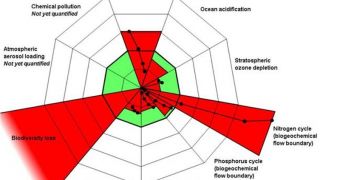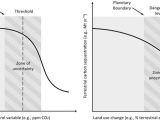A group of 28 internationally renowned scientists proposes a new method of ensuring that humanity continues to develop and thrive for generations to come. They argue that defining a “safe planetary operating space” can only be achieved through the concept of global biophysical boundaries. Combining established knowledge of the planet, the group says that its proposals are the first attempt ever at identifying and quantifying a set of nine planetary boundaries that would become the basis of all sustainable development initiatives of the future.
In its set of ideas, which appears in the latest issue of the renowned scientific journal Nature, the team reports that these guidelines could provide humankind with the means necessary to overcome 21st-century problems such as overpopulation, food and water scarcity, global warming and climate change. Some of the most renowned scientists in the initiative include Nobel Laureate Paul Crutzen, the Director of the Potsdam Institute for Climate Impact Research, Hans Joachim Schellnhuber, as well as leading experts Will Steffen, Katherine Richardson, and Jonathan Foley.
“Human pressure on the Earth System has reached a scale where abrupt global environmental change can no longer be excluded. To continue to live and operate safely, humanity has to stay away from critical ‘hard-wired’ thresholds in the Earth’s environment, and respect the nature of the planet's climatic, geophysical, atmospheric and ecological processes. Transgressing planetary boundaries may be devastating for humanity, but if we respect them we have a bright future for centuries ahead,” the Director of the Stockholm Resilience Center, Johan Rockstrom, explains. He is also the lead author of the published paper.
“What we now present is a novel framework through which our scientific understanding of the Earth System can potentially be used more directly in the societal decision making process,” Katherine Richardson, who is a professor at the University of Copenhagen Earth System Science Center, and also a co-author of study, adds. “We are entering the Anthropocene, a new geological era in which our activities are threatening the Earth’s capacity to regulate itself. We are beginning to push the planet out of its current stable Holocene state, the warm period that began about 10,000 years ago and during which agriculture and complex societies, including our own, have developed and flourished,” the Australian National University Climate Change Institute Director, Will Steffen, shares.
The team suggests that, within these nine boundaries, humankind will be free to pick any avenues of development it chooses, but that, outside them, the Earth's population should expect a gloomy and unsustainable future. Indeed, if such is the case, the future would also become irreversible. “And beyond the edges of the map, we don’t want to go. Our future research will consider ways in which society can develop within these boundaries – safely, sanely and sustainably,” the University of Minnesota Institute on the Environment Director, Jonathan Foley, concludes.

 14 DAY TRIAL //
14 DAY TRIAL // 
